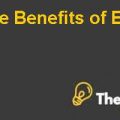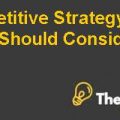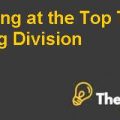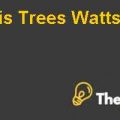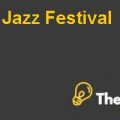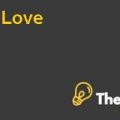
BUSINESS PROBLEM
The problem discussed in the case is related to Pilgrim Bank’s online banking group. The analyst there namely Alan Green and his Boss Ravi Raman had to meet with a senior management team and discuss their internet strategy. The main problem that they are facing is whether they should start charging fees for the use of customer incentive or they should begin offering customer incentives such as rebates and lower service charges to encourage greater use of the channel.
Online banking has emerged as a revolution in the banking sector. In a study conducted by Dizon, J.A. (2009), Francisco M. Caparros,Jr., Senior Vice-President of Asia United Bank and President of Banc Net said "E-Banking's appeal is primarily its convenience. Clients now a day’s want quick and instant results; they don't want to wait anymore in lines."
To solve the above mentioned problem, the report analyzes those type of customers that take credit facility as credit facility is the major revenue generator for a bank. In addition, subsequently the decision regarding the problem is taken according to the nature of customers. If credit facility has been previously availed by the high income earning customers then the bank can charge fee for the use of online service by the customer. If not, then the bank should offer incentives to the customer.
The old people increasingly focus on getting discounts and if customers using the credit facility are of higher ages then the bank must focus on giving more discounts rather than charging more for using internet banking facility.
The section below analyzes two important relationships:
- The relationship between the yearly income and average monthly credit card expenditure.
- The relationship between the age of the customer and the number of active credit accounts.
Thus hypotheses to be tested are;
Hypothesis # 1:
The customers with higher yearly income have higher average monthly credit card expenditure.
Hypothesis # 2:
The greater the age of the customer, the higher is the number of their active credit accounts.
ANALYSIS USING DESCRIPTIVE STATISTIC
The analysis of demographics of the data of the sample of applicants for a type of credit card is given below;
| Type | No. of customers | Percentage |
| Having Credit Card | 1023 | 78% |
| No credit Card | 296 | 22% |
| Total | 1319 |
In the sample data, 78 percent of customers have applied to avail the facility of the credit card so these are potential customers who can use the online banking option.
MEAN AND STANDARD DEVIATION
Mean and standard deviation of the three demographics variable of sample customers is calculated. These variables were age of sample customers, their income and their credit card expenditure.
|
Descriptive Statistics |
|||||
|
|
N |
Minimum |
Maximum |
Mean |
Std. Deviation |
| Age |
1319 |
.17 |
83.50 |
33.2131 |
10.14278 |
| Income |
1319 |
.21 |
13.50 |
3.3654 |
1.69390 |
| Card_Exp |
1319 |
.00 |
3099.51 |
185.0571 |
272.21892 |
| Valid N (listwise) |
1319 |
|
|
|
|
Interpretation
According to the analysis, it is found that mean age of customers is 33.21 with a standard deviation of 10.143. This means average customers of the bank are in early 30s, i.e. they are young and thus they will have more tendencies to attain internet banking.
It is also observed that the average income of customers is $3365 with a standard deviation of $1694. On an average, customers are high income earning people thus they are likely to pay extra charges if bank charge it on the online banking service. However, they may not like this too.
The average monthly credit card expenditure of sample customers is $185.05 with a standard deviation of $272.22. The average monthly credit card expenditure is low as compared to the average income of customers.
HISTOGRAM SHOWING AVERAGE AGES
The histogram below shows ages of customers. Most of the customers fall in the age category between 20 and 40 years.......................................
This is just a sample partial case solution. Please place the order on the website to order your own originally done case solution.
Provides a context in which students can explore the decision making that is critical analysis of the data reported. Installation of a retail bank and making decisions related to the bank's policy for online banking. The management team is to assess the bank should charge a fee for access to online banking, incentives for service, or use any other policy in general. With thousands of customers are already using the web site, the bank may well determine the effects on profitability of services and retention, before making a final decision policy. Told from the point of view of recent MBA graduate who was accused of carrying out the necessary analysis of the data, and ultimately come up with policy recommendations.
used as part of the third module of the course to regulate operation of the service, which addresses how managers can inform their decisions with customer data (606-097). "Hide
by Francis H. Frey, Dennis Campbell Source: HBS Premier Case Collection 8 pages. Publication Date: October 19, 2001. Prod. #: 602104-PDF-ENG


